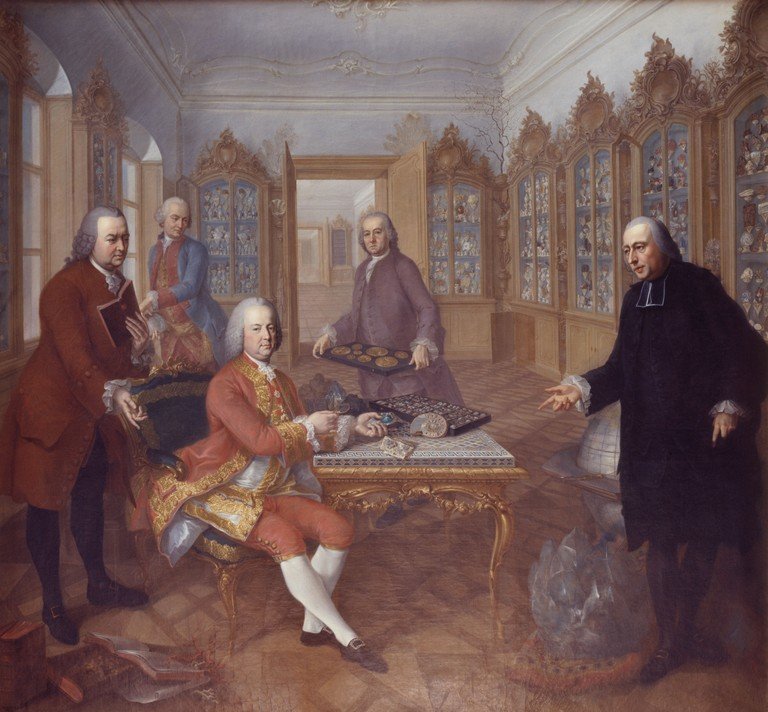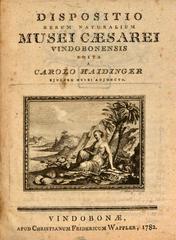
Natural History Museum Vienna: Visiting Hours, Tickets, and Essential Visitor Guide
Date: 14/06/2025
Introduction
The Natural History Museum Vienna (Naturhistorisches Museum Wien, NHM) stands as a testament to Vienna’s rich scientific, cultural, and architectural legacy. Founded under the Habsburg dynasty and officially opened in 1889, the museum occupies a grand Neo-Renaissance building on Maria-Theresien-Platz. It houses one of the largest and most comprehensive natural history collections in the world—spanning 11 scientific departments and containing approximately 30 million objects. The NHM is renowned for its iconic treasures, innovative exhibitions, and its ongoing role as a global research center (wien.info; Vienna Unwrapped; cestee.com; allthingsaustria.com).
This comprehensive guide presents essential information for planning your visit, highlights must-see exhibits, details the museum’s architectural grandeur, and offers practical tips for an enriching experience at one of Vienna’s most celebrated historical sites (Wikipedia).
Table of Contents
- Origins and Founding Vision
- Architectural Grandeur and Symbolism
- Growth of the Collections and Scientific Milestones
- Evolution of Exhibitions and Public Engagement
- Visiting the Natural History Museum Vienna: Essential Information
- Must-See Exhibits
- Role in Education and Research
- Preservation and Modern Significance
- Frequently Asked Questions (FAQ)
- Plan Your Visit: Final Tips
- References
Origins and Founding Vision
The Natural History Museum Vienna was conceived as a grand repository for the imperial collections amassed over centuries by the Habsburgs, reflecting both the era’s scientific curiosity and the dynasty’s international reach. Construction began in the 1870s, and the museum officially opened to the public in 1889 as part of a major urban development on the Ringstrasse, alongside its twin, the Kunsthistorisches Museum (wien.info).
Architectural Grandeur and Symbolism
Designed by Gottfried Semper and Carl Hasenauer, the museum’s Neo-Renaissance façade stretches 170 meters, crowned by a 60-meter dome topped with a statue of Helios—the Greek sun god symbolizing enlightenment. The building forms a majestic pair with the Kunsthistorisches Museum, framing Maria-Theresien-Platz and reflecting the Habsburg vision of Vienna as a center of art and science (Vienna Unwrapped; Hoskins Architects).
Inside, visitors are greeted by a grand staircase adorned with statues of pioneering scientists, a marble-clad Dome Hall, and Hans Canon’s monumental ceiling fresco, “The Cycle of Life.” The museum’s artistic flourishes are not mere ornamentation—they embody Enlightenment ideals and the interplay of art and science (Wikipedia).
Growth of the Collections and Scientific Milestones
The NHM’s collections trace their roots to the imperial Cabinet of Natural Curiosities, steadily expanding through exploration and research. Today, the museum holds around 30 million specimens, though only a fraction are displayed. Key highlights include:
- Venus of Willendorf: A 29,500-year-old Paleolithic figurine and one of archaeology’s most famous finds.
- Meteorite Collection: The world’s largest public meteorite collection, featuring over 1,100 specimens.
- Dinosaur and Fossil Halls: Life-sized dinosaur skeletons and rare fossils, including Steller’s sea cow (cestee.com).
The museum has also been pivotal in advancing paleontology, anthropology, and environmental science, supporting international research and conservation efforts.
Evolution of Exhibitions and Public Engagement
The NHM continually updates its permanent and special exhibitions with interactive, multimedia displays. Family-friendly features include a moving Allosaurus model, a “terror bird” reconstruction, and a 3D meteorite impact simulator. The Digital Planetarium, added for the museum’s 125th anniversary, offers immersive journeys through the cosmos (wien.info; allthingsaustria.com).
Special events, workshops, and guided tours are regularly available in multiple languages, while tactile and accessible exhibits ensure all visitors can engage with the museum’s treasures.
Visiting the Natural History Museum Vienna: Essential Information
Visiting Hours
- Tuesday to Sunday: 9:00 AM – 6:30 PM
- Wednesdays (extended): until 9:00 PM
- Closed: Mondays and select holidays
Check the official website for up-to-date hours and occasional special closures.
Tickets and Admission Prices
- Adults: €12–€18 (depending on exhibitions)
- Reduced: €9–€10 (students, seniors, disabled)
- Children/Teens (under 19): Free
- Family and combination tickets: Available
- Online Booking: Highly recommended during peak seasons (nomadepicureans.com)
Location and Getting There
- Address: Burgring 7, 1010 Vienna, Austria (Maria-Theresien-Platz)
- Public Transport:
- U-Bahn: Volkstheater (U2, U3 lines)
- Tram: Lines 1, 2, D, 71
- Bus: Multiple lines serve the area
- On Foot: A short walk from the historic city center
- By Car: Limited parking; public transport is recommended (vienna-trips.at)
Accessibility and Amenities
- Wheelchair Access: Elevators, ramps, and accessible restrooms (except rooftop tours)
- Tactile Exhibits: For visually impaired visitors
- Cloakroom and Lockers: Near the entrance
- Restrooms: On every floor
- Café: Serving drinks, snacks, and pastries
- Museum Shop: Souvenirs, books, and gifts (note: re-entry not permitted after visiting the shop)
- Wi-Fi: Free in public areas
- Family Facilities: Baby-changing stations and stroller access
Special Events, Guided Tours, and Photographic Spots
- Guided Tours: Multilingual, bookable online or at the museum
- Workshops and Educational Programs: For all ages
- Photography: Allowed without flash/tripods for personal use; check for exhibition-specific restrictions
- Photographic Highlights: The dome with Helios statue, grand staircase, dinosaur models, and Venus Cabinet
Must-See Exhibits
- Venus of Willendorf: The 29,500-year-old figurine, centerpiece of the prehistoric collection (vienna-trips.at)
- Dinosaur Hall: Full-scale Allosaurus and Diplodocus skeletons (allthingsaustria.com)
- Meteorite Gallery: Over 1,100 specimens, including lunar and Martian meteorites
- Digital Planetarium: Immersive astronomy presentations (separate ticket required)
- Mineralogy and Gemstones: Thousands of crystals and rare minerals
- Human Evolution and Anthropology: Dioramas, mummies, and ancient artifacts
Role in Education and Research
The NHM is a leading research institution, supporting studies in taxonomy, geology, evolution, and more. Over 60 scientists and numerous guest researchers conduct pioneering work, while educational outreach includes workshops, guided tours, and public lectures. The museum’s commitment to accessibility, biodiversity, and sustainability is reflected in its exhibits and research programs (wien.info; allthingsaustria.com).
Preservation and Modern Significance
The museum’s collections include extinct and endangered species, offering a poignant reminder of the fragility of biodiversity. As part of Vienna’s UNESCO World Heritage city center, the NHM balances historical preservation with modern standards, ensuring its legacy as a guardian of natural history and a beacon for future generations (Hoskins Architects; fotoeins.com).
Frequently Asked Questions (FAQ)
Q: What are the Natural History Museum Vienna visiting hours?
A: Tuesday to Sunday, 9:00 AM–6:30 PM (extended to 9:00 PM on Wednesdays); closed Mondays.
Q: How much are tickets?
A: Adults €12–€18, students/seniors €9–€10, children under 19 free. Family and group rates available.
Q: Is the museum wheelchair accessible?
A: Yes, except for rooftop tours. Elevators and ramps are provided.
Q: Are guided tours available?
A: Yes, in multiple languages. Booking in advance is recommended.
Q: What are nearby attractions?
A: Kunsthistorisches Museum, Hofburg Palace, Vienna State Opera, MuseumsQuartier, and Maria-Theresien-Platz gardens.
Q: Can I take photos inside the museum?
A: Non-flash photography for personal use is allowed; check for exhibition restrictions.
Plan Your Visit: Final Tips
- Best Times: Weekday mornings or late afternoons for fewer crowds.
- Visit Duration: 2–3 hours for highlights; longer for families or enthusiasts.
- Advance Booking: Highly recommended, especially during tourist seasons.
- Vienna City Card: Offers discounts on admission and public transport (travelright.com).
- Stay Updated: Check the official website for special exhibitions, events, and latest visitor information.
- Enhance Your Experience: Download the Audiala app for interactive maps, audio guides, and up-to-date info on Vienna’s historical sites.
References
- wien.info
- Wikipedia
- Hoskins Architects
- Vienna Unwrapped
- allthingsaustria.com
- vienna-trips.at
- nomadepicureans.com
- travelright.com
- fotoeins.com
- cestee.com
Explore Vienna’s natural and cultural wonders—plan your visit to the Natural History Museum Vienna for an unforgettable journey through science, history, and art.






















































































































































